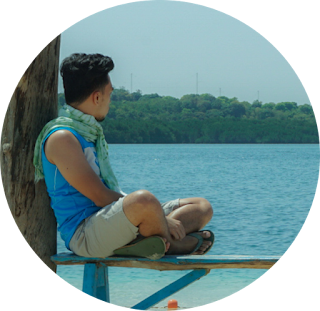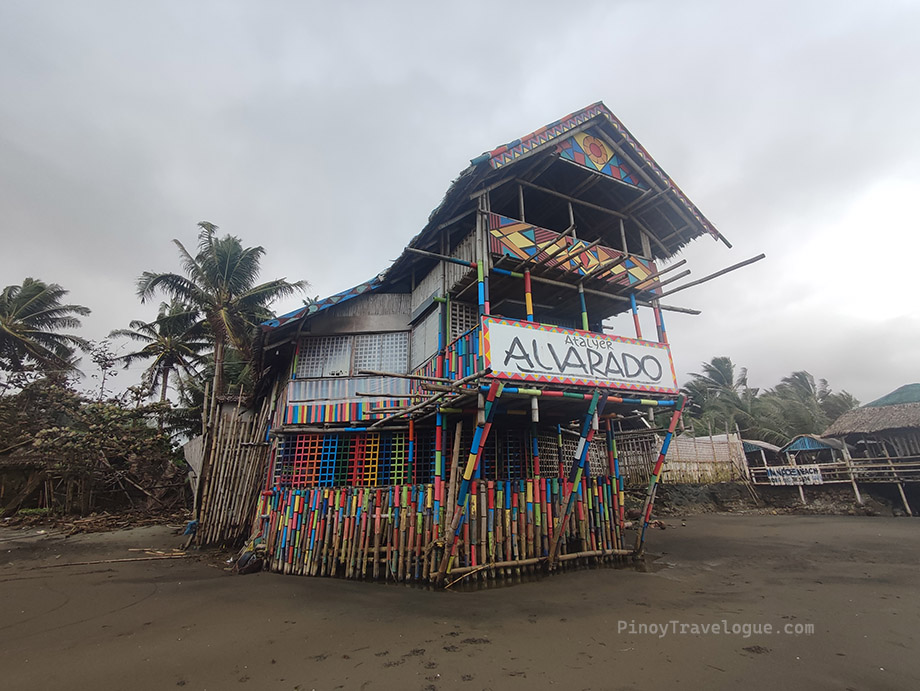 |
| Nunelucio Alvarado's house and art studio |
Our first day in Sagay City was supposedly for the tourist spots nestled within the expansive Sagay Marine Reserve, but the unforgiving weather had us reschedule the seaward activities. We failed to get clearance from the coast guard and the ensuing change in our itinerary lead our group of visiting media to discover Sagay City's art scene, along the shores of the city's protected seas.
Maestro Nune
We met with the internationally acclaimed Sagaynon painter, Nunelucio Alvarado, in his beachfront house and atelier located in Margaha Beach, near the port of Old Sagay.
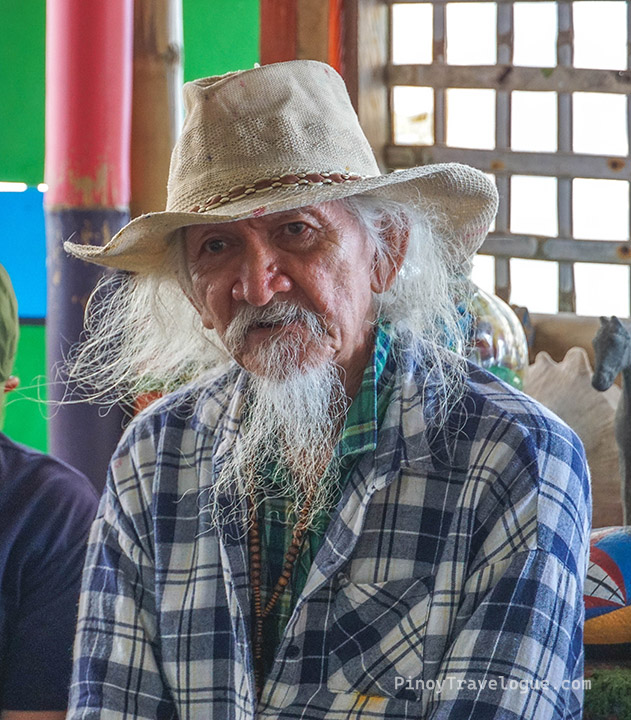 |
| Nunelucio Alvarado (Maestro Nune) |
“He is already battling dementia, but he can still fully understand,” orients Helen Arguelles-Cutillar, Sagay's Information and Tourism Officer, as we finish our coffee and native Negrense snacks at Kape Albarako, an art cafe owned by Alvarado himself, before we proceeded to his home located just a few walks away.
Maestro Nune (Teacher Nune), as he is dearly called, lives with his wife Sally surrounded by his artworks in a brightly painted three-story thatched bamboo house that faces the healing ocean breeze of Sagay Marine Reserve.The maestro’s house and studio as well as his coffee shop, which provides a meeting place and an art gallery for other local artists, are among the attractions of Margaha Beach.
READ ALSO: Sagay Marine Reserve: Community-based Tourist Spots in Sagay City's Protected Waters
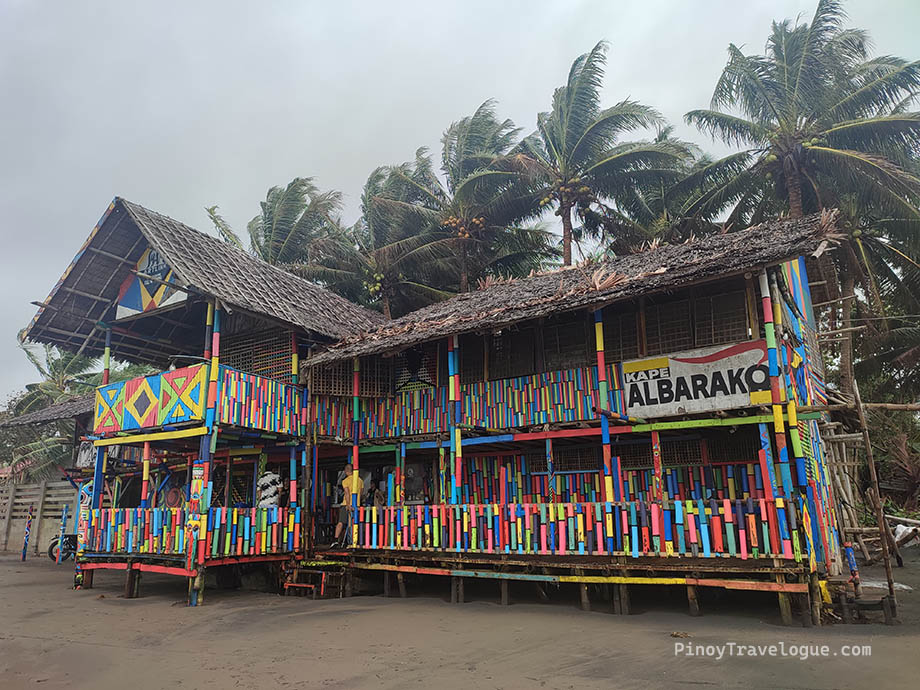 |
| Kape Albarako |
Alvarado is already in his mid-70s, but still sits and paints every single day, said his wife. There was even an unfinished painting at his table when we visited, apparently his current work-in-progress.
Though mostly hailed for his provocative works that depict real socio-political conditions (social realism), when asked what his painting style was, the maestro cheerfully explains that he does not confine himself to any particular style, but just plays with image, concept or message that he wants to convey.
 |
| One of Alvarado's artwork displayed inside Kape Albarako |
A University of the Philippines (UP) Fine Arts educated and multi-awarded painter, Maestro Nune was among the recipients of the Thirteen Artists Award (TAA) in 1994. The TAA is a triennial conferment by the Cultural Center of the Philippines (CCP) that recognizes exemplary individuals in the field of contemporary visual art.
Truly a master painter of National Artist caliber, Maestro Nune has also been nominated twice for the Order of the National Artists award, the highest honor a Filipino artist could receive.
READ ALSO: Botong Francisco's House and The Second Gallery
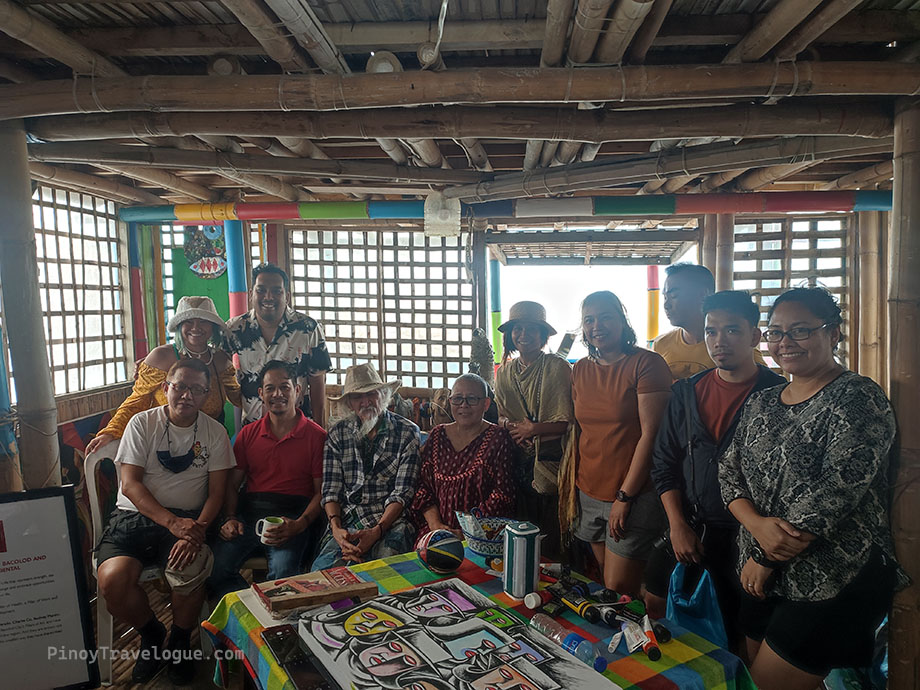 |
| Our group with Maestro Nune and his wife Sally |
Trisikad, Community of Colors
Nunelucio Alvarado is regarded as one of Sagay’s cultural treasures, not only because of the glistening awards under his belt, but essentially for his impact on the local community.
When he decided to reside in Margaha Beach, the beachside village slowly became one of the city’s vibrant places. Alvarado educated the neighborhood with his painting skills and led an artistic movement, which inspired his mentees to take the arts to the streets, literally.
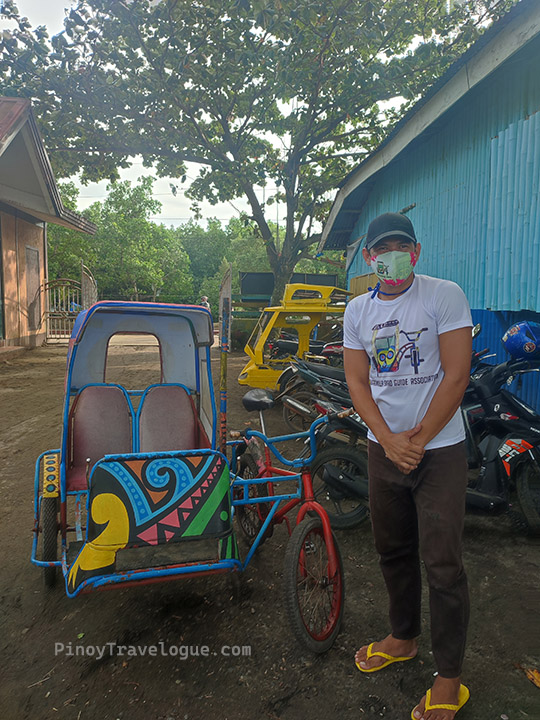 |
| Trisikad tour guide |
Referred to as Purok Bougainvillea Community of Colors, the village features a short avenue of painted fences and houses with varicolored facades, each was curated with bold, tropical colors like how the maestro does in his paintings.
City visitors get to see these houses that stand in harmony with mangrove-laden areas via the Trisikad Tour, wherein a likewise colorful trisikad (cycle rickshaw), driven by a member of the community-based Bougainvillea Trisikad Guides Association, navigates the neighborhood while telling stories about the artistic community.
The tour would terminate at the beach for some food and refreshments at Kape Albarako and a visit to the cafe’s galleries.
Beyond Painting, a Film Festival
Just as Maestro Nune is not confined to a particular painting style, his artistic passion and his vision for the Sagaynons extend to other forms of art.
Facing the stretch of Margaha's black sand beach, there is an installation art consisting of seven towering wooden poles that protrude from the shallow waters, or from the sands if viewed during low-tide. Alvarado conceptualized this installation called Haligi sang Taliambong (Pillars of the Arts), which represents the seven art disciplines—visual arts, literature, architecture, music, theater, dance and film—and signifies Sagaynon resiliency from the Super Typhoon Yolanda (international name, Haiyan).
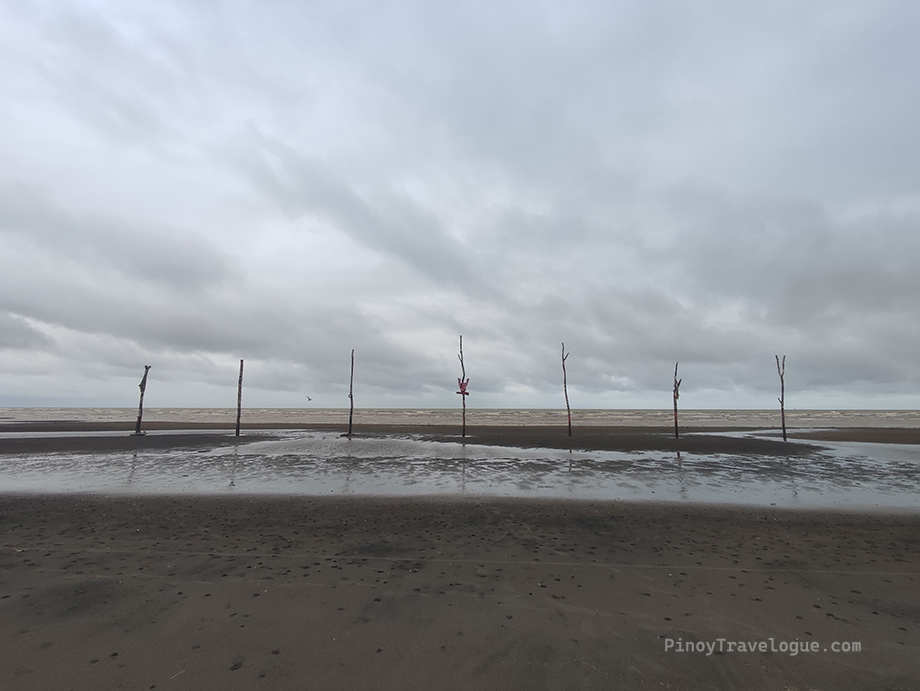 |
| Haligi sang Taliambong installation art |
The colorful poles, sculpted with different figures, were made out of the trunks salvaged from the uprooted trees that were scattered after Yolanda’s wrath in 2013. “He [Alvarado] wants us [Sagaynons] to immerse ourselves in other disciplines, not just in painting,” explains Helen.
Apart from visual artists, Sagay is also a city of budding filmmakers and performers. The city holds the annual Margaha Film Festival, which showcases Sagaynon heritage and lifestyle through feature films produced by homegrown writers, directors and talents.
During the film fest, Sagaynons convene at the beach for the screening of participating films, then hold the awards night at the city's public plaza.
Sagay's Modern Vibrance
Purok Bougainvillea and its beach where Nunelucio Alvarado resides is considered the city’s arts epicenter. But beyond the modest village, Sagay’s city center is a vibrant spot in itself.
 |
| The Siete train in Sagay Public Plaza |
The spacious, lush and recently modernized Sagay Public Plaza is a venue for the city’s huge events and festivals, but on ordinary days, it affords both Sagaynons and tourists a breathable recreational space. It has a food strip where local food businesses can also thrive.
Sagay’s Product Showroom & Visitor Center, which displays and sells the city’s locally produced items, both edible and non-edible, is also an income generating portion of the public park.
READ ALSO: Sagaynon Faith: Sagay City's Vito Church and Palapak Tradition
A striking plaza display is the freight train called “Siete,” a colossal iron remnant of the historical Insular Lumber Co. (ILCO), once the largest lumber company in the world, which called Sagay their home from the 1900s up to some years after World War II.
When evening falls, the dancing fountain in the middle of the plaza conjures a crowd. The nightly visual and musical spectacle that lasts for about 30 minutes is a display of the city’s modern vibrance.
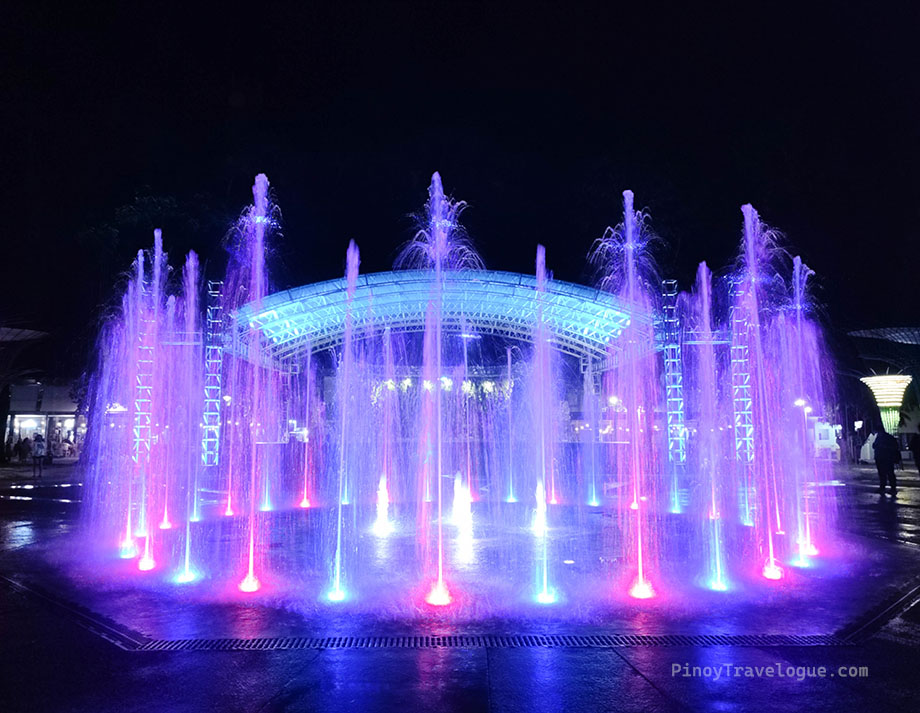 |
| Dancing fountain of Sagay Public Plaza |
How to Go to Sagay
~ For more information about traveling around Sagay, contact the city's Information and Tourism Office at (+63) 909 091 4278 or reach them via their Facebook page, Sagay Tourism Destinations.
This is a portion of an article that was originally published in the July 2023 issue of Enrich magazine (with some minor revisions).

